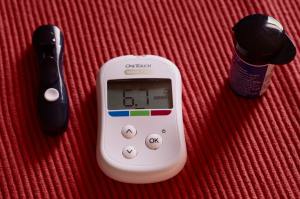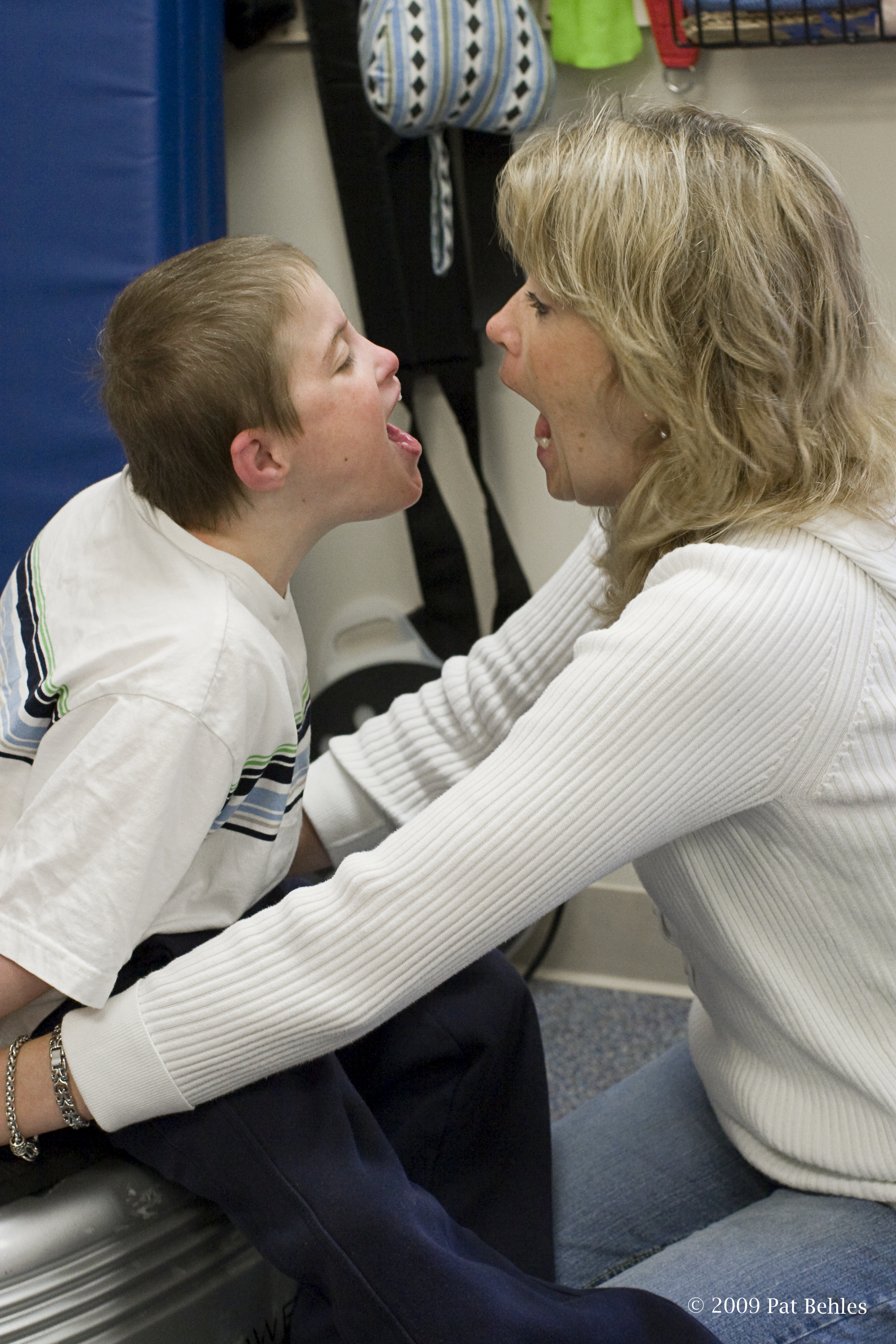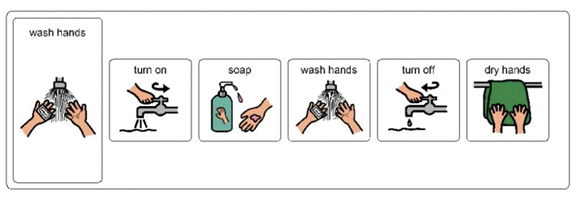By: Manager of Nutrition Therapy, Cindy Baranoski MS, RDN, LDN
Better Immunity is Achievable
What better time than now to start building your defenses against illnesses? With coronavirus or COVID-19 here, there is a lot of fear and a feeling of helplessness to do anything. But you should know that there are things you can do to help protect yourself and your family’s health overall.
As a human we are bound to become ill, but how that illness manifests in us, how extreme are the symptoms, how long does it last, when does it go away, and can we get it again, can be under a bit of our control if we do the right things to keep our body’s immune system and defenses strong.
What Protects Us From Illness

Many components make up our defense system, some we can control and others we cannot. A human body contains trillions of microorganisms or microbes that outnumber our cells by 10 to 1. The term ‘microbiome’ refers to the genetic material all of these microbes contain, and their total genetic material is 200x more than the number of genes in a human body. Many of these microbes are pathogenic, or able to cause disease, but coexist with a human body never causing disease. Consider that two to six pounds of a 200-pound person would be bacteria!!
The immune system
Our immune system is made up of cells that perform the ‘immune response’ to foreign invaders, such as disease causing bacteria, viruses, fungi, parasites or any other foreign matter. B cells, T cells and Memory cells are all mobilized in some manner when they determine there is an antigen – a toxin or foreign substance – that has entered the body. The response is antibodies matched to an antigen, like a key in a lock, helping to neutralize or destroy the antigen.
Physical protection from foreign invaders
Our body has many physical systems in place to keep us healthy and protect us from foreign microbe invaders, or the ones living within us, from causing disease.
- Skin – is a physical barrier, with a pH that discourages growth of organisms, and our secretions of sweat and oil can kill many bacteria.
- Stomach – acid in the stomach can kill organisms.
- Tears – will wash away any foreign matter and contain enzymes that kill bacteria.
- Saliva – helps clean microbes from our teeth, tongue and oral area.
- Respiratory tract – including our nose, which contains fine hairs to trap foreign matter, mucous lining the system to trap invaders, and cilia to sweep away trapped organisms.
- Large intestines – contains bacteria that help keep invaders in check. This ‘gut microbiome’ makes up 70% of our immune system.
- Bladder – urine washes away microbes from the area leading to the outside world.
What we Have Limited Control Over

Chronic noninfectious conditions, such as cancer, diabetes, hypertension, high cholesterol, heart disease, inherited genetic conditions all play a role in diminishing the defense system of the human body. Those that are most notable include the following –
Heredity – is one of the greatest factors that influence our noninfectious disease risk. Our genes play an important role in what conditions, such as diabetes, cancer, hypertension, may occur in our lives. These conditions impact our immune system, and can leave us more susceptible to disease.
Age – after 40 years of age the human body is more vulnerable to chronic diseases, though very young children whose immune systems are still developing, or those over 65, are especially vulnerable.
Environment – and the ability to have clean, sanitary living conditions is key to keeping us healthy. Though our bodies need to be exposed to microorganism to help our immune systems develop resistance. Too clean doesn’t allow our systems to recognize good and bad microbes. Additionally, conditions that include the presence of drugs, chemicals, pollutants, waste in food and water, or the absence of medical care, increase risk for disease.
Microorganisms – severity of or resistance to pose challenges as well. For some, only one cell is needed to create drastic illness in the human body. Bacteria that become resistant to antibiotics from overuse by us have mutated to be able to bypass the antibiotic’s effectiveness.
What We Have Control Over
Though we cannot see most of the microbes that cause sickness, they are there, and we can create an environment within and outside of our body that prevents them from causing illness. Stress, personal hygiene, nutrition, fitness, sleep, substance use, environment, and behaviors are all under our control.
Stress, such as what we are experiencing right now diminishes our ability to fight disease. When we are stressed our body will divert its energy away from nonessential functions to those that are essential – the Fight, Flight or Freeze response. Our blood is redirected to muscles to run or fight, breathing is faster, heart rate increases, pupils dilate, and hearing is keener, ready to take on the Sabre Tooth Tiger that generally doesn’t exist. What our body prepares to fight remains invisible, but it is prepared at all times. This leaves body functions required to exist in an unstressed state diminished in their ability.

Reducing Stress
If you’ve not already received numerous emails or suggestions from friends, there are many ways to manage your stress. Any one of these should be done with care, intent, and in such a gradual manner a snail could pass you by. Safety is key, to not create an injury or situation that will cause you more stress.
Exercise is one way, and has more than just stress reduction benefits. A workout club or gym may not be available to you, but you have so much in your home that is available!

Walk out your door for 15 minutes, turn around and come home. You’ve just walked for 30 minutes.
Turn on some fun music and simply march or walk in place for 20 minutes.
If you live in a condo or apartment building, do the stairs (taking precautions with social distancing and face masks right now.)
If you don’t have weights, you can use cans, bottles, something of weight that you can use for dumbbells.
Floor exercises that are easy, safe and you do not over do such as sit ups, leg raises, push ups. You only need to do a few, or even just one.
Yoga can be done on your own, without one piece of equipment. There are recorded and live streams of yoga all over the Internet today. As a yoga instructor, I can share that anyone can do it! Yoga is not just for bendy, flexible, skinny-legged sweaty 25-year-olds.
Chair yoga is amazingly beneficial, and is done by 85-year-olds around the globe.
Restorative yoga is one of the most relaxing forms of yoga, where you are supported by props, which increases your parasympathetic nervous system, slowing your heart and relaxing your body.
The yoga many are familiar with regular upright movement, is a wonderful stress reliever-though remembering if you’ve never done yoga, it may contribute to more stress.
And if nothing else, just laying on the floor, on your back, legs and arms out on the floor (or knees bent), known as savasna, is one of the most important poses in yoga. Lay there for 10 minutes.
Meditation may sound all “woo woo,” but it is more than just crossing your legs into a pretzel, closing your eyes and chanting ‘ommmm’. Meditation is simply anything you do to direct your mind to become focused on one thing, taking you away from this world momentarily. It reduces the physical reactions to stress mentioned above, slows your breathing, quiets your organs, increases your parasympathetic nervous system, and quiets your racing mind. The benefits of meditation are not IN the meditation, but in your body’s response when not meditating. By helping to maintain the ‘quiet’ your body should be in, your immune system can work it’s best.
Reading a book, gardening in the yard, coloring, drawing or painting, and praying are all forms of meditation.
Traditional meditation takes practice, and yes, sitting quietly, not moving, eyes closed, is what many think of. Try sitting still for 1 minute with your eyes closed. You’ve just started meditating. Now, get comfortable in a supportive seated position, and try it for 5 minutes. This is how you start to meditate with intention to do so, knowing it can only help.
Numerous meditation apps exist now, with timers, streamed and recorded meditations from 1 minute to many. Examples include:
Laughter should not be discounted by any means. Laughter is the best medicine! It can decrease stress hormones, relax muscles, and decrease pain. Ten minutes of laughter is better than any drug!
Sleep is a time when our body heals, rests, and prepares for our next day. Restful sleep is often not possible when we are stressed. 7-8 hours a day for an adult, and more for children and teens. There are many activities that can impact restful sleep, including technology, alcohol, eating before bed, and stress. Helping reduce your stress will promote restful and restorative sleep. Aim to create a bedtime routine for you and your family with no technology, eating, bright lights, noise – good sleep equals less stress, and less stress equals good sleep.
Personal Hygiene is something we take for granted. We have soap, water, tooth brushes and toothpaste, showers, baths, shampoos, hand sanitizers and hand soaps. Just so many forms of how we can keep ourselves clean on a daily basis. We forget this is not available to everyone in our area or the world. But keeping ourselves clean is something we can do, easily, by washing our hands routinely – especially now.

Improving Personal Hygiene
The greatest source of infection is our hands. We touch everything, then ourselves, transmitting to someone or us, germs and potential antigens. Wash your hands – for 20 seconds – with soap and water, between the fingers, back side of the hands, under the nails and wrists.
Tweet
When you cough or sneeze, cover up! Most of the time we have on shirts, right? Pull it over your nose and mouth, use your elbow and sleeve, and if you use your hands, wash them after.
And now we have face masks. So treat your face mask like you do your underwear –
only wear it if it’s clean
don’t touch it or adjust it – especially in public
don’t lend it to anyone
don’t borrow anyone’s
make sure it fits well
wash it after wearing
if it’s stained or torn, throw it away I
From A Chalkboard a Day

Nutrition is one of the key contributors to the immune system. Remember, we are built on what we consume and do with our bodies. The ingredients for a great body include what we consume, and if all we eat and drink is lacking in nutrients, then that is who we become. Under nutrition or malnutrition is not reserved exclusively for poor families and children who are skinny and wasting away. Malnutrition is found in obese individuals as well as healthy weight ones too. http://www.MyPlate.gov shared by the USDA gives a basic outline of what should be consumed for variety of all the nutrients, including Carbohydrate, Protein, Fat, Calories, Fluid and 29 known vitamins and minerals. We are what we eat! To learn more about helping a child with nutrition or feeding issues, visit: https://www.easterseals.com/dfv/our-programs/medical-rehabilitation/nutritional-therapy.html.
Improving Nutrition
- A balanced diet containing of all the different food groups is the starting place. Review your family’s diet, and see if you have foods representing Fruits, Vegetables, Protein, Dairy (animal or plant), Grains (whole) as well as fat. Is there enough fluid each day? Are there vitamin/mineral supplements taken already. Are there nutritional drinks being consumed each day, and what might these be replacing or supplementing if they are used regularly. What about processed foods, high sugar, fat and salty foods that are being consumed more than they should be. Are fresh foods represented well? And is one food group consumed in a much greater quantity than it should be? You need to review your diet before you know what to change to make it better.
- Protein is one of the most important nutrients, helping make antibodies of the immune system. We all need varying amounts of protein, but we also don’t need as much as we think we need. An average adult needs about 50 grams of protein a day, and consumes about 100 grams a day in the US. Children need less than this, yet often consume more than they need as well. Main food sources include meat, fish, poultry, egg, legumes, dairy.
- Malnutrition and under nutrition exists in this country, and includes lack of calories and protein, but often times our society consumes more than enough of these two nutrients, however, lack many vitamins and minerals. A recent government study shows potassium, calcium, Vitamin E, C, A, D and magnesium are all less than optimal in our diets. All vitamins and minerals are ingredients of our immune system.
- A few nutrients identified in research as key to the immune system and it’s response, that you should be sure you are receiving adequate amounts of, include the following –
- Zinc – found in tuna, beef, poultry, pumpkin and hemp seeds and dairy. Caution, over consumption of zinc, or taking large supplements, can interfere with copper balance in the body.
- Selenium – found in Brazil nuts, tuna, sardines, salmon, chicken egg, brown rice.
- Vitamin C – found in acerola extract, rose hips, camu camu, black currents, guava, lemons, limes, oranges, strawberries. Though higher doses can cause loose stools.
- Vitamin D – does not have many great food sources. Fortified animal and plant milks will contribute when consumed in the right portions. Short periods of exposure to the sun without sunblock allows for production of Vitamin D beginning in the skin. However, with the concerns for skin cancer, sun exposure is limited. Supplementation of Vitamin D3 is the most reliable source.
- Probiotics are beneficial for the human body. Studies have shown their benefit to the digestive tract, and ultimately the immune system, by ensuring the line of defense in the gut microbiome is balanced and working well. They are found naturally in some foods, and more common are manufactured supplements taken orally. ‘Prebiotics’ are food for the probiotics and are found naturally in our gut through consumption of fiber, but can also be found along with probiotic supplements.
Important Note on Vitamins, Minerals and Probiotics – Taking large amounts of any supplements, or consumption in large amounts of any individual or multivitamin/mineral supplement is not advised. If you are choosing to do this for you or your child, you are directed here to speak to a physician or dietitian.
Environment and Behaviors could be discussed in so much more detail than this post can provide. But know your behaviors are under your control. What you do impacts anyone and everyone, including our world. The environment is not just something that happens, but is changed by everything we do. Being thoughtful of ourselves is so important, but if we become so self absorbed and focused in the long run, our world will become more skewed from what it should be, which ultimately comes back to our ability to be healthy in this world.
In summary
Creating a place in your world that is safe, clean, nutritive, and supportive of your immune system is totally within your reach, taking time and attention. The scary world of viruses and diseases that are out of your control can be managed, and the impact it has on health – yours, your family’s, friends, and society – is pretty significant. There is so much more, but I hope some of the thoughts and ideas mentioned here might stir you to rethinking your role in this world of immunity.
I wish you and your family the best health. For more information on our nutrition services, please visit: https://www.easterseals.com/dfv/our-programs/medical-rehabilitation/nutritional-therapy.html.






 Teenage years: Encourage physical fitness, which is important for any teenager or young adult. Hopefully as the child faces the challenges of being a teenager, they have confidence in their abilities and can continue to be a part of a sport community, like a swim team,
Teenage years: Encourage physical fitness, which is important for any teenager or young adult. Hopefully as the child faces the challenges of being a teenager, they have confidence in their abilities and can continue to be a part of a sport community, like a swim team, 

 A common misconception is that protein is only found in animal-based foods, like meat. However, protein can also come from plant-based foods, like beans (example: pinto, black, kidney beans) and soy products (example: tofu, tempeh, edamame). The protein food group includes meat, poultry, seafood, beans, peas, eggs, processed soy products, nuts, and seeds. Dairy foods such as milk, cheese, yogurt, and cottage cheese will also provide your child with protein. Your child’s protein needs vary based on age, sex, and activity level. (Please see Table 1 above for recommended intake amounts.)
A common misconception is that protein is only found in animal-based foods, like meat. However, protein can also come from plant-based foods, like beans (example: pinto, black, kidney beans) and soy products (example: tofu, tempeh, edamame). The protein food group includes meat, poultry, seafood, beans, peas, eggs, processed soy products, nuts, and seeds. Dairy foods such as milk, cheese, yogurt, and cottage cheese will also provide your child with protein. Your child’s protein needs vary based on age, sex, and activity level. (Please see Table 1 above for recommended intake amounts.)




 Other signs that your child may have a physical delay, particularly with school aged children, is their ability to keep up with their peers. These children may appear clumsy on the playground, or stay away from obstacles that are difficult, such as climbing walls and monkey bars, or parents may receive reports their child is having difficulty with activities in P.E. class. Also, the child may be less motivated, or outright refuse, to be an active participant in extracurricular sports.
Other signs that your child may have a physical delay, particularly with school aged children, is their ability to keep up with their peers. These children may appear clumsy on the playground, or stay away from obstacles that are difficult, such as climbing walls and monkey bars, or parents may receive reports their child is having difficulty with activities in P.E. class. Also, the child may be less motivated, or outright refuse, to be an active participant in extracurricular sports.
 Make the First Five Count is Easter Seals FREE online child development screening tool to help measure and keep track of your child’s growth and development.
Make the First Five Count is Easter Seals FREE online child development screening tool to help measure and keep track of your child’s growth and development.

 Climbing: climbing up onto furniture or onto playground equipment while maintaining their abdomen off the surface and arms extended.
Climbing: climbing up onto furniture or onto playground equipment while maintaining their abdomen off the surface and arms extended.

 Around 2 years of age, children enter the age of autonomy where they become aware of their individuality and become increasingly independent. This is also the age where they become increasing comfortable testing limits. Around this age, kids are most likely to start becoming “picky eaters.” By the time children enter preschool, many have begun to move past this phase and start to expand their food preferences; however, some children don’t move out of the picky eating stage and continue to refuse foods. Foods once liked may become dropped and not added back into their diet. The big difference between typical picky eating and avoidant /restrictive food intake disorder (AFRID) is that typical picky eating fades away in conjunction with repeated food exposure and a positive mealtime environment.
Around 2 years of age, children enter the age of autonomy where they become aware of their individuality and become increasingly independent. This is also the age where they become increasing comfortable testing limits. Around this age, kids are most likely to start becoming “picky eaters.” By the time children enter preschool, many have begun to move past this phase and start to expand their food preferences; however, some children don’t move out of the picky eating stage and continue to refuse foods. Foods once liked may become dropped and not added back into their diet. The big difference between typical picky eating and avoidant /restrictive food intake disorder (AFRID) is that typical picky eating fades away in conjunction with repeated food exposure and a positive mealtime environment. Recruit your child’s help. If you do not already meal plan, start meal planning and involving your child as much as possible in the process. When at the grocery store, ask your child to pick out food on the grocery list (even if it is not food your child regularly eats). At home, encourage your child to help rinse fruits and vegetables, stir batter, use scissors to cut herbs, or set the table. During mealtimes, serve dishes family style where everyone passes the different food bowls.
Recruit your child’s help. If you do not already meal plan, start meal planning and involving your child as much as possible in the process. When at the grocery store, ask your child to pick out food on the grocery list (even if it is not food your child regularly eats). At home, encourage your child to help rinse fruits and vegetables, stir batter, use scissors to cut herbs, or set the table. During mealtimes, serve dishes family style where everyone passes the different food bowls. Think of fun and creative ways to present the same food. For example, if you child is learning how to like pizza, you can try serving pizza on a tortilla shell or on an English muffin. The following are a few books on food that are good to read with children:
Think of fun and creative ways to present the same food. For example, if you child is learning how to like pizza, you can try serving pizza on a tortilla shell or on an English muffin. The following are a few books on food that are good to read with children:
 Gross Motor Skills: The outdoors is one of the very best places for children to practice and master emerging physical skills. Children can freely experience gross motor skills like running, skipping, and jumping. It is also an appropriate area for the practice of ball-handling skills such as throwing and catching. There are also tons of opportunities for strengthening and coordination through sensoriomotor and heavy work activities such as sitting on a swing, pushing a swing, pulling a wagon, and lifting/carrying objects.
Gross Motor Skills: The outdoors is one of the very best places for children to practice and master emerging physical skills. Children can freely experience gross motor skills like running, skipping, and jumping. It is also an appropriate area for the practice of ball-handling skills such as throwing and catching. There are also tons of opportunities for strengthening and coordination through sensoriomotor and heavy work activities such as sitting on a swing, pushing a swing, pulling a wagon, and lifting/carrying objects.





